Following on the 10th Gen Intel Core Series Launch, we have the Xeon W counterpart. This is a big deal in the market as it is bringing 10-core Xeon chips to the market. Also, Intel is making another important change: the name. We now have the Xeon W-1200 series which is something we have wanted to see for some time. For the past decade, or more, the Xeon E3-1200 series, then the Xeon E-2100 and E-2200 series have had the same label for the server and workstation parts.
How We Got Here
As Intel has started to bifurcate the features of the platforms, it has led to some strange launches. For example, we witnessed an Intel Xeon E-2100 server re-launch and Intel Xeon E-2200 Series Launched for Servers… Finally. We had releases of the exact same CPU SKUs quarters apart from one another. The workstation launch was held closer to the desktop part launch while the server “launch” of the same parts happened much later.
If you want to read more about the historical evolution of the line, you can start with Looking back at Intel Xeon E3-1200 V1-V6 to the New Xeon E-2100. While the Xeon E3 series in this segment was four cores for many generations, the Xeon E-2100 series brought us a six-core processor in the Intel Xeon E-2186G. The Intel Xeon E-2288G is the flagship Xeon E-2200 series processor with 8-cores. Now we have a 10 core SKU. This rate of core count increase was unheard of previously.
Intel Xeon W-1200 Series SKUs
Here is the initial SKU list for the series.
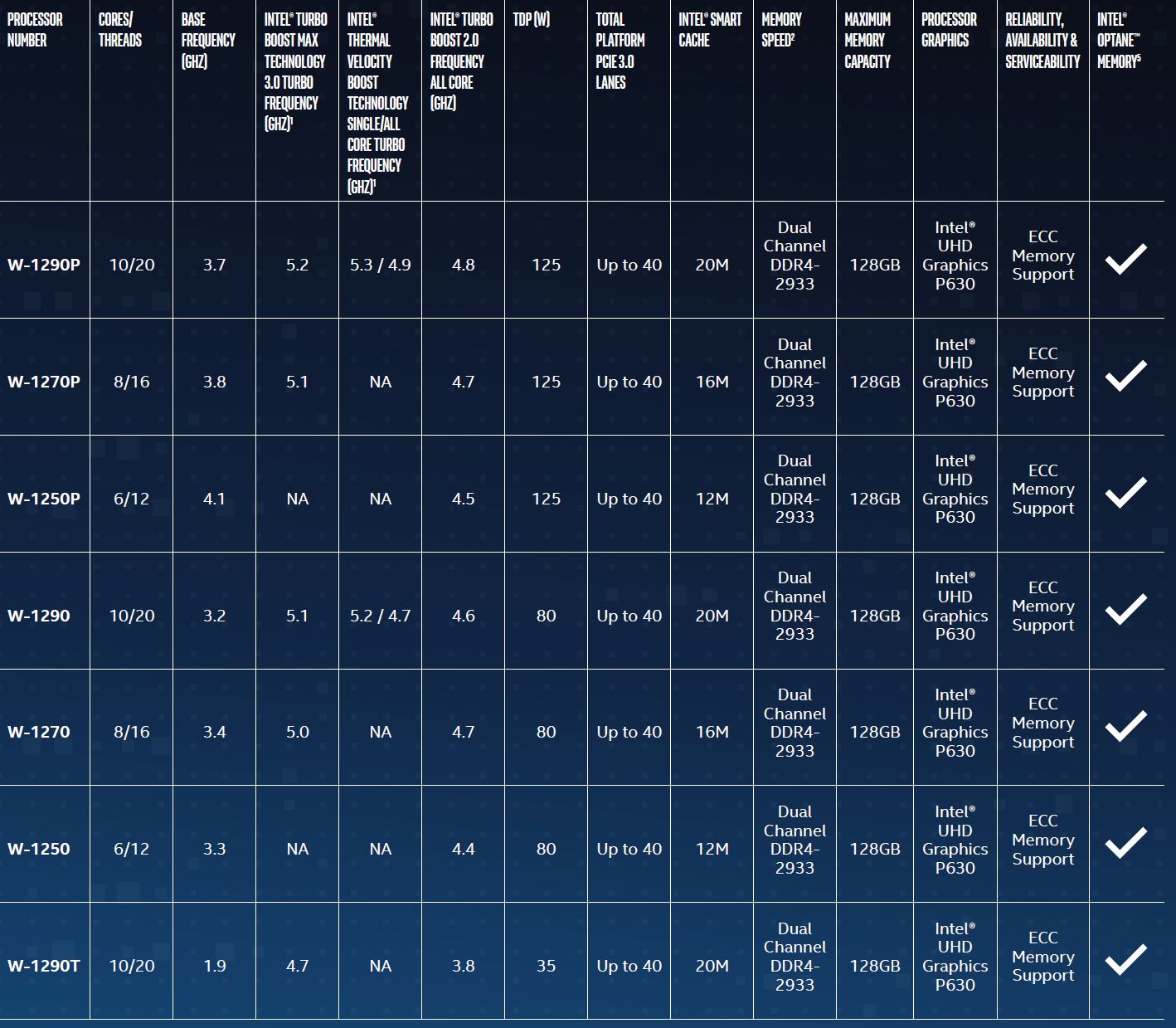
As you can see there are several parts, all with onboard graphics. Perhaps the most notable is that there are no quad-core options at this time. For those hoping to make servers based on these chips, the Xeon W-1290T with a 35W TDP and up to 128GB of DDR4-2933 memory support should be nothing short of exciting. Perhaps one day that SKU can make it into something like the Intel NUC9VXQNX Review an 8 Core Xeon and GPU Capable NUC Option.
Intel Xeon W-1200 Series Platform Overview
If you want to read more about the platform, it may be best to see our 10th Gen Intel Core Series launch piece. There are more diagrams there on the overall solution. We get the 5.3GHz top speeds as well as ECC memory support and vPro support as we expect in this workstation Xeon segment.
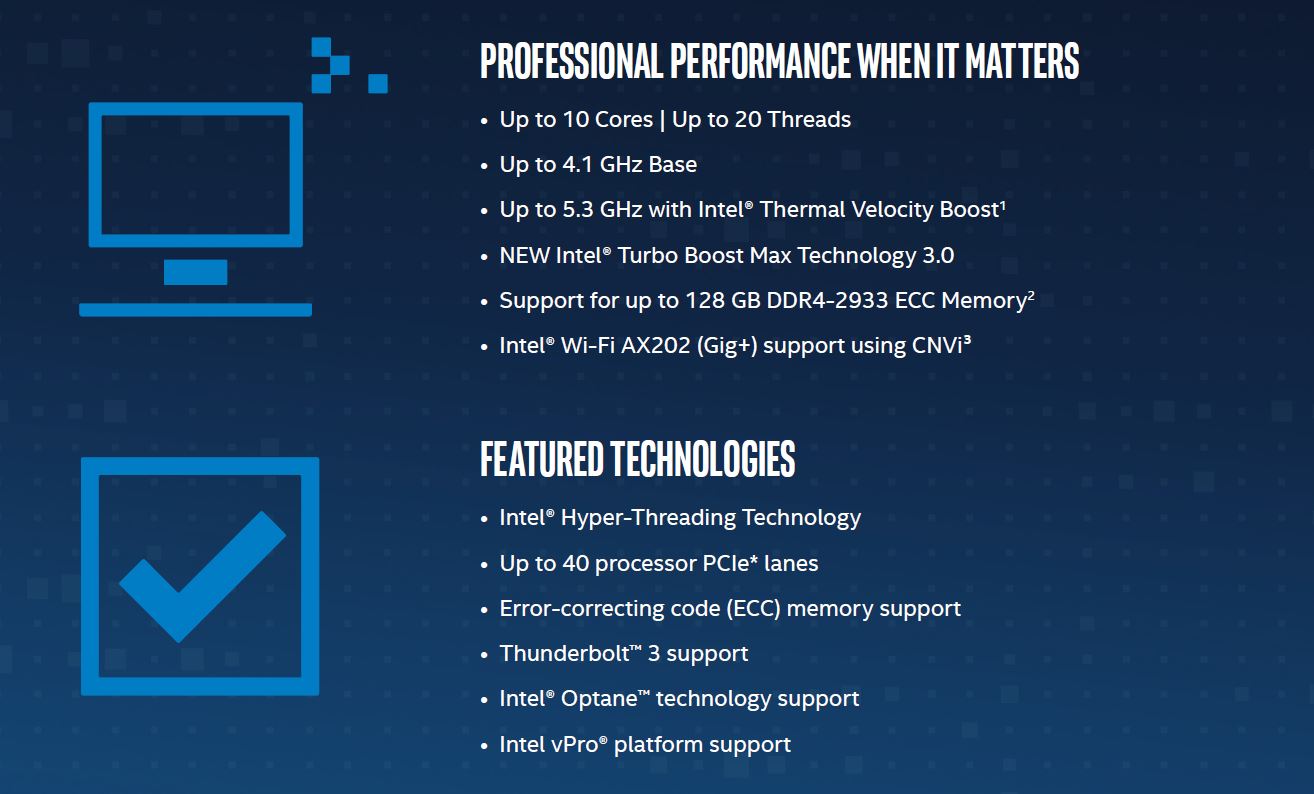
With the Xeon W-1200 series, we get the Intel W480 chipset that enables the platform. The W480 is the part that helps differentiate motherboards into Xeon versus their desktop Core counterparts.
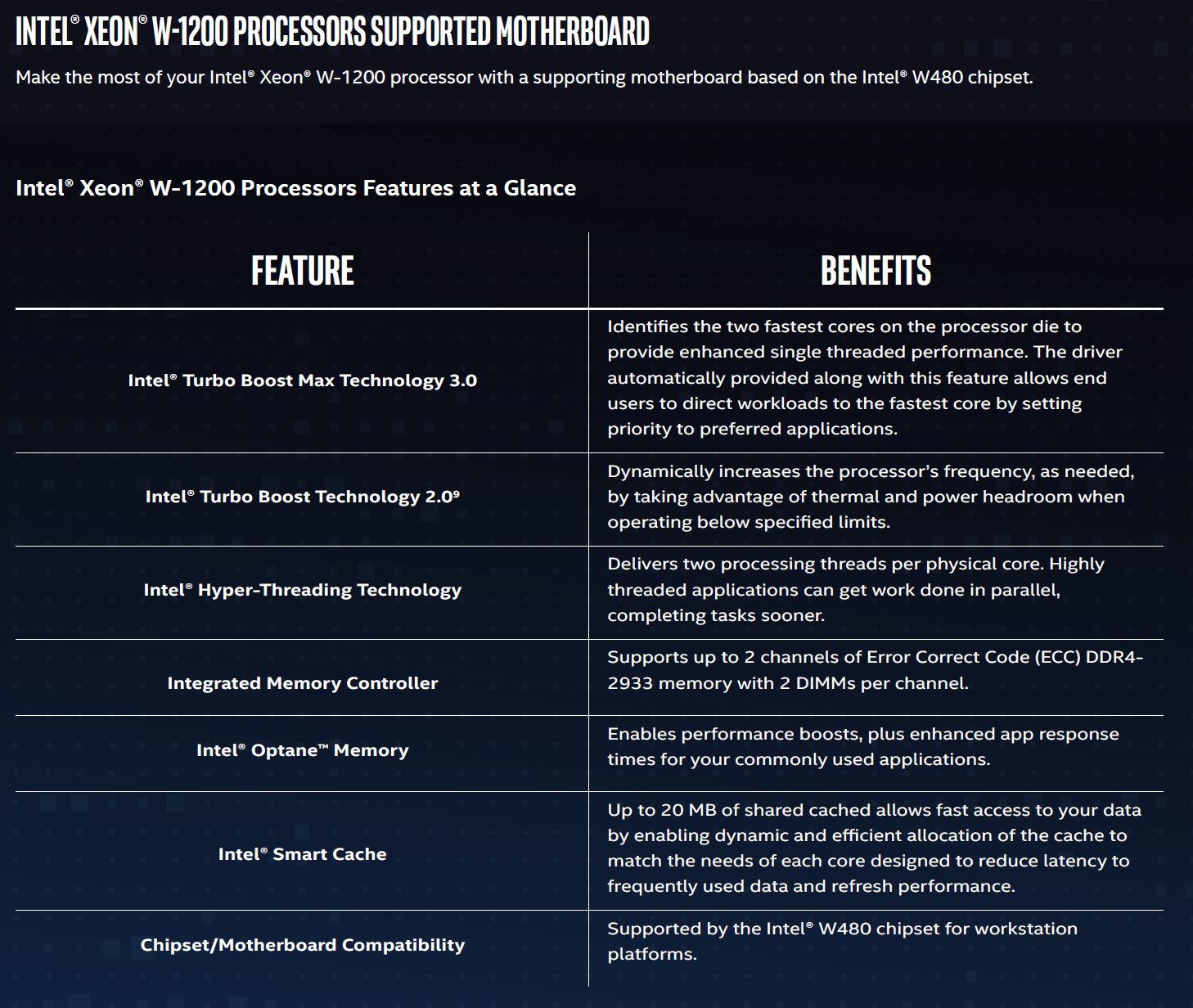
Intel is pushing a portfolio of capabilities at this point. One is the “new” Intel i225 support. As we mentioned previously, that controller is undergoing a re-spin and has been around long enough that we noted Current Intel i225 2.5GbE NICs Are Missing a Big Feature. These NICs are not integrated into the PCH, so they are optional components that are PCIe connected devices on the motherboard. Although it is some marketing fluff, it is also a good sign that we are seeing Intel push the market.
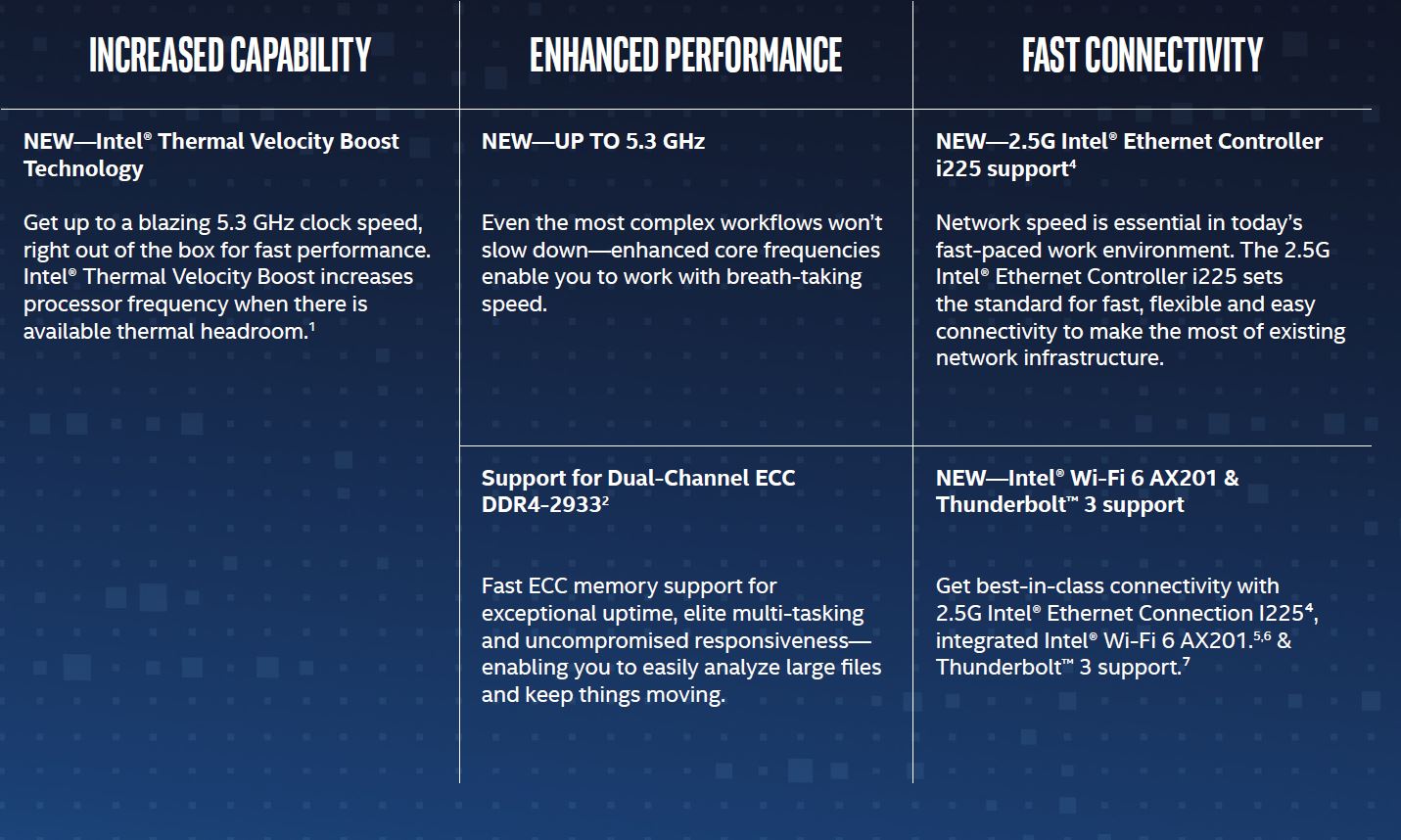
One could argue that these chips are very slimly differentiated versus their Core counterparts. While this is true, it is also the case that the validation and motherboard support packages for OEMs is different. The different families and SKUs also allow OEMs to have differentiated platforms and pricing for what is largely the same CPU and platform.
Final Words
It is great to see this line get a Xeon W tag alongside the Intel Xeon W-2200 Series such as the Intel Xeon W-2295 and the Intel Xeon W-3275. Intel now has lines reaching 10, 18, and 28 cores for the workstation market. For those hoping for a Xeon E-2200 series server refresh, you can, again, get into the waiting mode. For the time being, the Xeon E-2200 series is the go-to server part in this segment as it is on a different validation cycle and schedule.

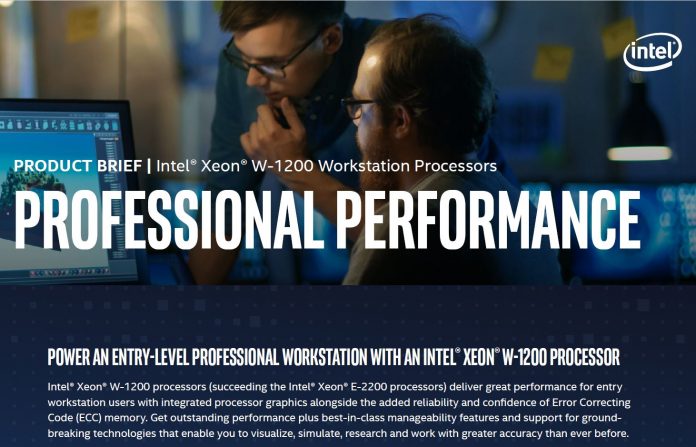



It would be interesting to see what will be the power consumption of the Xeon parts against the desktop parts. Are they going to go crazy as on the desktop or will they try keep them close to TDP?
Why bother with Comet Lake? Compare this release with the Ice Lake Xeon due (per Intel) within the next three months:
Comet Lake = 14 nm, 2-ch DDR4-2033, PCIe 3.0 < Q2 2020
Ice Lake = 10 nm, 8-ch DDR4-3200, PCIe 4.0 < Q3 2020